Growing your own vegetables is really satisfying. Nothing compares to biting into the first ripe tomato of the season or crunching down on green peas just picked from your patch. If you want to grow more food, grow it better or just have something to do this weekend, then you’ll find plenty of vegetable garden ideas right here.
If you’re just starting your vegetable garden then I highly recommend reading 27 Tips For Beginner Vegetable Gardeners.
DIY Seed Tape
When it comes to those tiny little seeds like carrots, radish and onions, it’s easy to oversow. Not only will you waste seeds but you’ll create work for yourself later on when you have to come back through and thin out your seedlings.
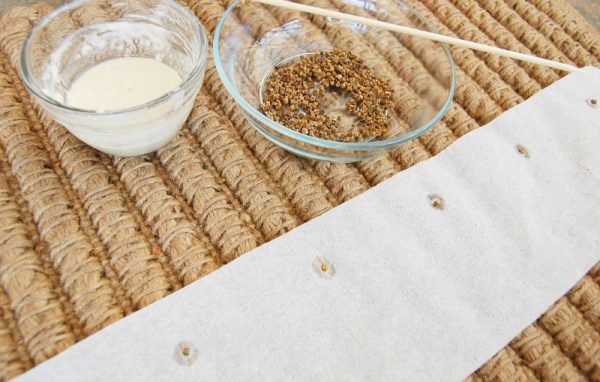
You might think that pulling a few extra seedlings out isn’t so bad, but thinning your crops disturbs the roots of the seedlings you leave to grow. This slows down and stunts their growth early on. For some plants, such as carrots, it can cause them to fork or grow into short, stubby carrots.
Thinning your crops disturbs the roots of the seedlings you leave to growClick To TweetPro tip: Mix cornstarch into the water that you use to glue the seeds to the toilet paper. Not only will the starch stick much more, but the starch also provides nutrients to beneficial soil bacteria.
Vegetable Garden Ideas: DIY Labels
Forgetting which plant is which? Or maybe you want to get the kids involved and help them identify their favorite foods (and learn how they grow). There are lots of things you can use to create labels, including wooden spoons, old aluminum blinds cut into 6 inch pieces, and of course, our favorites, sticks and stones!
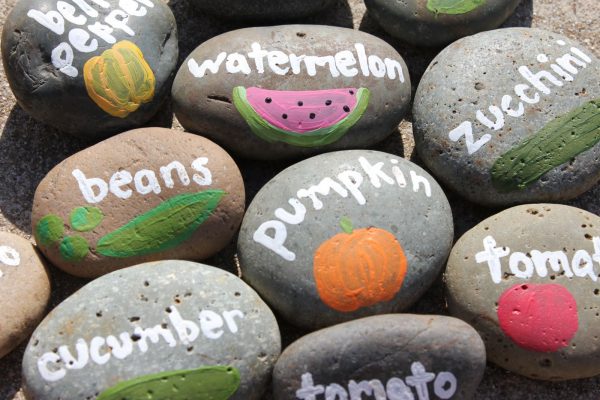
Pro tip: If you’re planning on saving your own seeds or want to keep track of lots of other things like sowing dates, variety, fertilizer, and crop rotations, then use numbers or codes instead. This way, you can keep track of all your plants and rotations without having to write everything out in detail.
Water Bottle Dribblers
If you’re in a hot climate (hello to our Aussie readers!) or you want to give thirsty plants extra water without watering your whole patch – then get some water bottle dribblers. You can make them easily from any PET bottle, some gardeners prefer to use wine bottles because they look nicer – either works.
Just poke a hole in the top of the cap, bury the top third of the bottle into the dirt, and voila! Or if you want to go the extra mile, get some terracotta water spikes, which are perfect for keeping bottles upright.
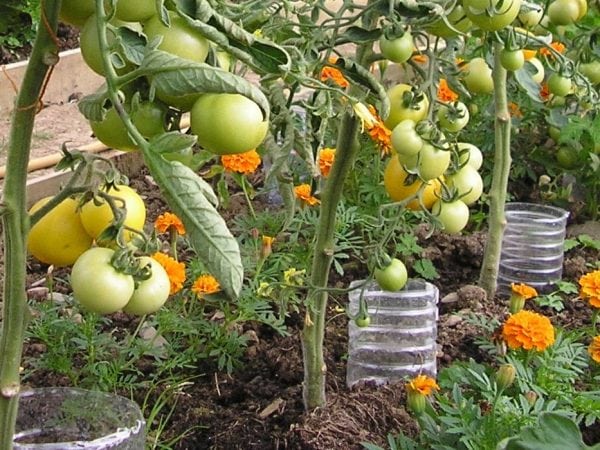
These work really well for growing thirsty crops in containers. Check out the 21 best vegetables to grow in containers here.
Milk Jug Hot House
This works best for gallon milk jugs, but you can also use smaller jugs too. Perfect for protecting young plants from late frosts in early spring. It’s also a great way to speed up the growth of newly planted seedlings at any time of the year, and it doubles as protection from pests too.
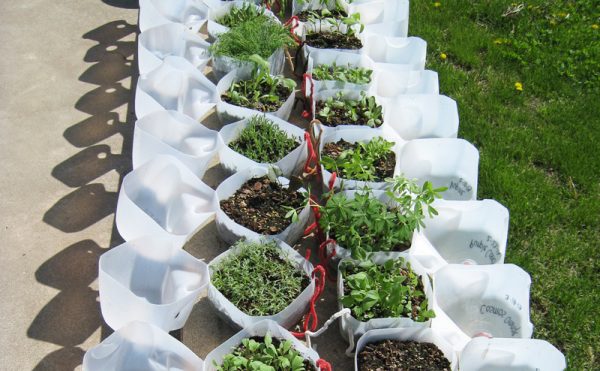
Just make sure you leave the cap off (or holes in the top) to let your plants breathe a little in warmer weather!
Vertical Cucumber Systems
Cucumbers, or cukes, as we call them in Australia, can be very prolific growers. They can quickly take over your vegetable garden if you’re not careful. A great way to keep them under control is to grow them up vertical supports like this Heavy Duty Polyester Plant Trellis Netting where you can just weave wandering shoots back into the supports.
Make sure you have plenty of strong stakes to support the weight.
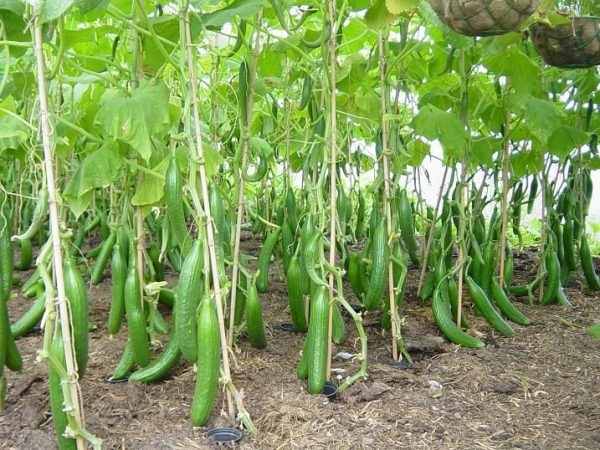
Pro tip: Use compostable cucumber netting instead of permanent supports (like metal mesh). This way, when your crop is finished, you just have to roll up the netting and put it in the compost—such a time saver!
Thinking about redesigning your vegetable garden? Make sure you check out our 12 best vegetable garden designs for backyard gardeners here.
Organic Weed Killer
Yes, you read that right. You don’t need all those nasty chemicals to kill weeds. Instead, you can opt for natural weed killers. There is no need to purchase expensive natural weed killers when you can make your own from stuff you’ve already got in your kitchen cupboard.
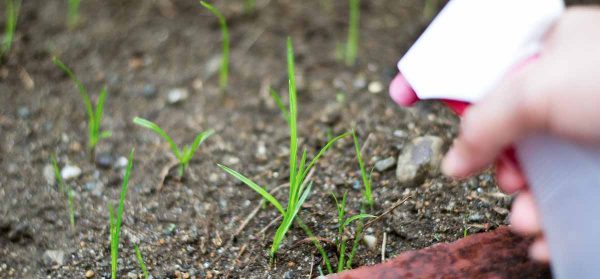
You can use it without worrying about putting harmful chemicals on or near your vegetables. Just make sure you don’t put it directly on your crops – remember, it will kill all plants, not just weeds!
Homemade Weedkiller Recipe
- A gallon of white vinegar
- 1 cup salt
- 1 tbsp Dawn dish soap
Mix and spray liberally over the leaves of the weeds. Your weeds will wither and die before the end of the week!
Homemade Organic Fertilizer
It’s actually much easier than you think to make this powerful fertilizer. Be careful with how much you apply, though, a little goes a long way because it is so concentrated and full of nutrients.
The best part of making homemade organic fertilizer is that you probably don’t even need to buy any ingredients! It’s made from kitchen scraps that every family has.
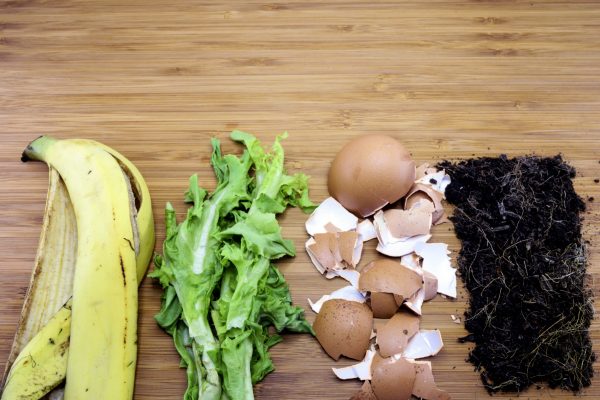
Homemade Fertilizer Recipe
- 1 part kitchen scraps
- 1 part coffee grounds
- Crushed eggshells
Roughly chop and mix the ingredients together, then bury them in the ground or lay them under mulch around your crops. The kitchen scraps will break down in 2-3 weeks after feeding your plants. This simple composting method not only enriches your soil but also reduces waste in an eco-friendly way.
Laundry Vegetable Basket
One of the things I don’t like about homegrown crops is that they’re always covered in dirt when I bring them into the kitchen. That was until I started using our old laundry basket to harvest crops and then rinse them off with the hose.
Pro tip: You can usually find these old wicker style laundry baskets at second hand shops and garage sales. They’re great for long term storage of pumpkins and root vegetables too because they let air circulate and still block out most of the light (once you put a cover over the top.
These brand new wicker baskets are ideal for storing root crops, all you need is a large tea towel to cover them.
Newspaper Weed Control
Whoever said newspapers weren’t useful anymore clearly never owned a garden. They are one of the most effective and easiest ways to control weeds. Lay 10 sheets thick and then cover with mulch and you’ve got the world’s best weed-free path for your vegetable garden. Cardboard works equally as well too, plus you can usually pick them up for free at big retail chains.
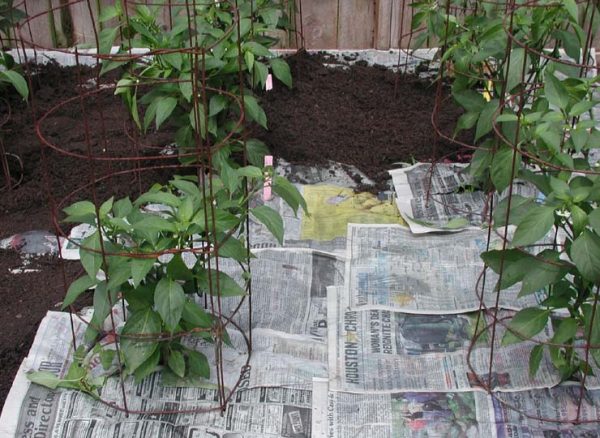
For a more permanent solution (great for paths), use Scotts Commercial Weed Matting which has a 25 year no weed guarantee.
Slug Beer Trap
If there’s one thing those little slimy suckers love, it’s getting drunk on beer. Well, that’s not entirely true, they’re actually attracted to the yeasty smell (that’s why wine won’t work). But once they take a sip of their favorite liquor, they quickly fall in and drown in drunken bliss. Blissful for us gardeners, maybe, not so much for the slugs.
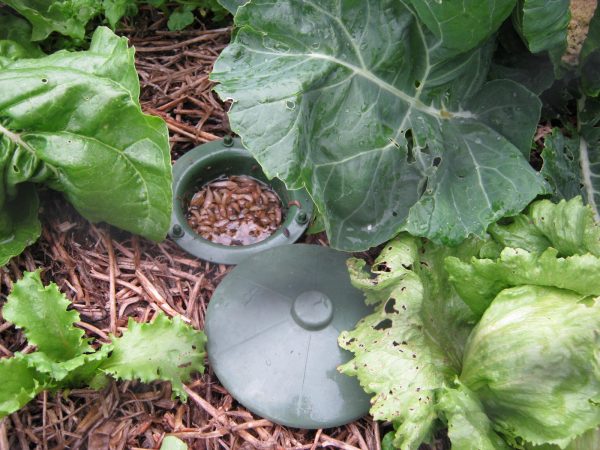
You can make a beer trap with a painted glass jar (slugs don’t like the light) on it’s side or partially buried. Place these baited traps strategically around your garden to effectively lure and capture slugs, protecting your precious plants from their munching. Remember to replenish the beer regularly to maintain its effectiveness
Pro tip: If you’ve got chickens, give a treat every time you empty your beer traps. If you don’t have chickens or ducks even, don’t just through the slugs away dig a small hole and bury them around your hungriest crops. They’ll rot down and provide plenty of good nutrients in the process.
Squash Arch
Best for creepers and climbers with heavy produce. Things like rock melons, gourds and big cucumbers that need a rigid structure to support their water-heavy fruits as they ripen. One of the best things about growing rockmelons up a rigid trellis is that they will fall to the ground when they are perfectly ripe ( I wish this was true for watermelons too but it’s not).
You might need to use some melon hammocks to support the weight of your crops as they grow. Pantyhose work well for small melons but for bigger melons use these Melon Hammocks instead.
Pro tip: use a few old car or truck tyres to bend the metal mesh into neat arches. Of course you can use whatever else that’s round and lying around too, but the rubber on the tyres works really well to grip the metal and stop it sliding around.
Bean Teepees
The first vegetable garden structure I ever made was a pee teepee. Easily made from sticks that you can collect through the winter as you prune your deciduous trees.
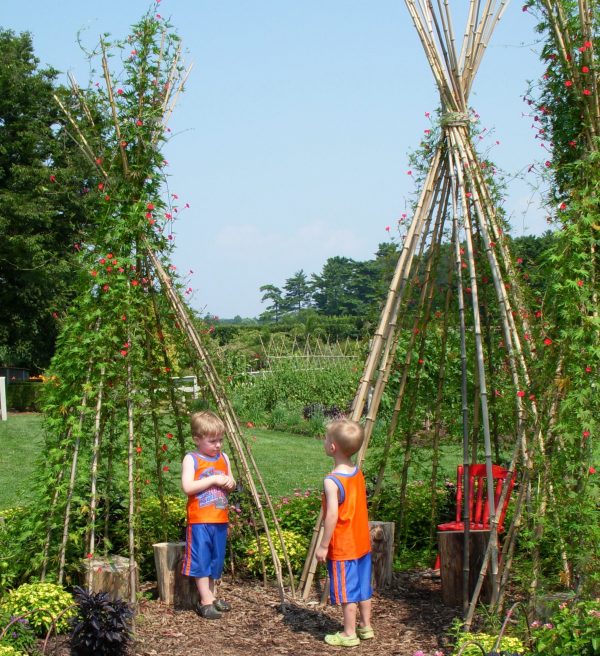
This project is great for kids. It’s super simple to make using just a bit of Jute Gardening Twine and 3-4 stakes.
Herb Stepping Stone Garden
If you’ve got a paved courtyard that doesn’t get much use why not pull up some pavers and plant some herbs in the soil. Group your plants on their watering requirements to make maintenance easier later on. I like to put mint and other water loving herbs right under my garden tap so they get a little extra water from the drips.
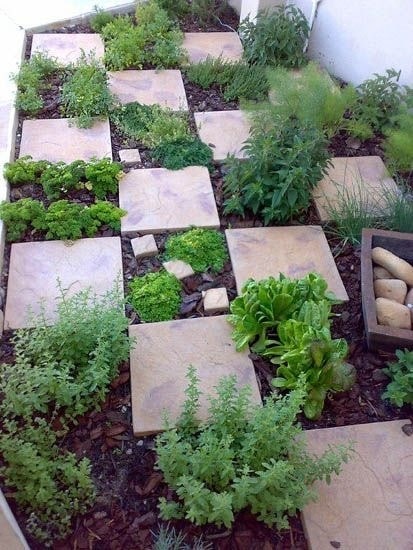
Pro tip: When choosing your herbs look for groundcover varieties. Plant low growing herbs such as oregano and marjoram in high traffic areas. These herbs can handle the occasional misplaced foot or wheel barrow tyre. Plant taller herbs like rosemary closer to walls to they are out of the way.
Recycled Pallet Garden
There are plenty of shipping pallets available for free or at almost no cost. They make great vertical gardens and create neat-looking rows for lettuce and salad greens. Just be sure to only use pallets that haven’t been treated and that aren’t covered in chemicals or oils.
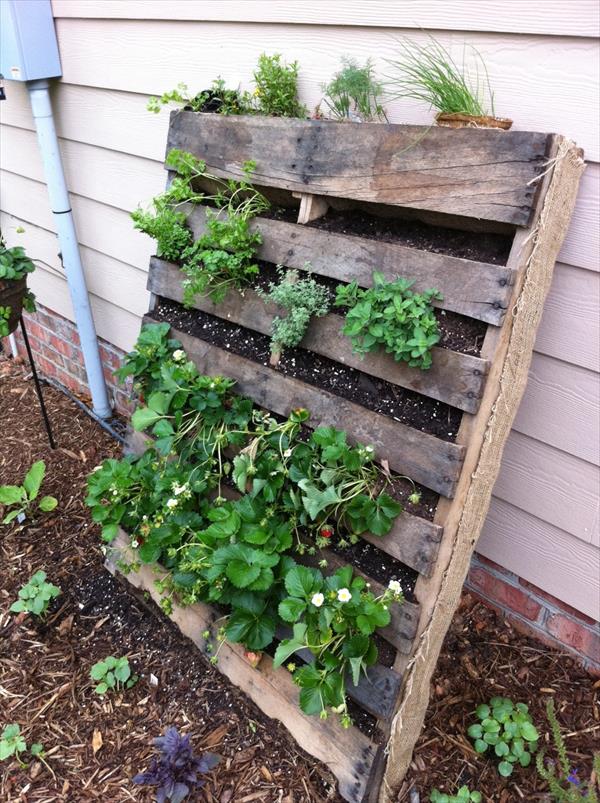
You can also use these Felt Vertical Garden Planters which are really easy to install and look great too. The fabric helps keep roots moist and insulates the soil so it doesn’t get too hot in summer. (Most vertical gardens fail because they get too hot.)
Chicken Tractor
My all time favorite time saving device. If you’re planning on building one of these it pays to make sure your garden beds are all the same size so your little tractor can hop from bed to bed. Not only will the chickens completely demolish last season’s crop leftovers, they’ll also scratch and peck out all the pests and seeds from the soil.
Plus they’ll mix their highly sort after manure into the soil too and all that scratching helps to get rid of soil diseases too. This should be on the top of every vegetable gardeners todolist!
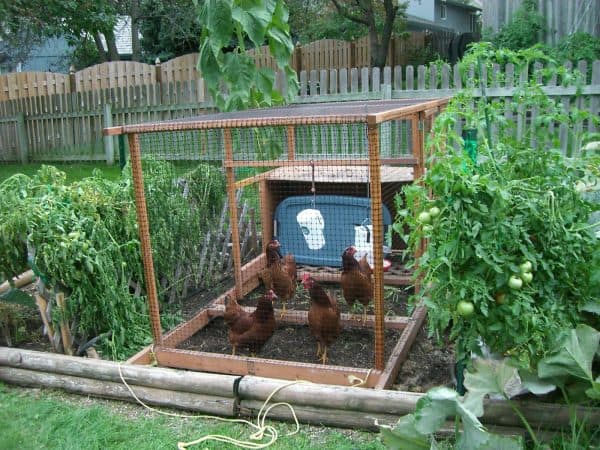
For larger gardens or if you want your chickens to be truly free range hens then use an electric chicken fence is affordable and very effective. It takes less than 30 minutes to setup and keeps your hens right where you want them – just remember to clip their wings!
Pro tip: Chop up the tough stems and tangled vines into smaller pieces so your chickens can scratch them into the soil where they’ll break down quickly.
Egg Carton Seedling Trays
If you haven’t been saving your egg cartons and egg shells now is the time to start. You can use cardboard egg cartons or plastic for this. I actually prefer the plastic ones because they last longer and don’t fall apart when I plant my seedlings into their new home. Egg shells are the perfect size for young seedlings to grow in plus as the shells break down they’ll feed your crops.
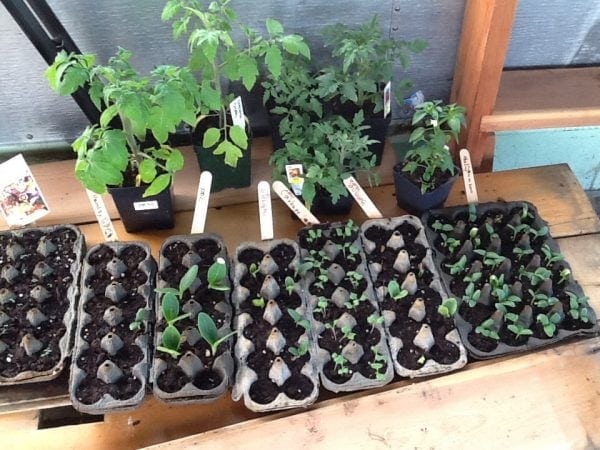
When you go to plant your seedlings out in the vegetable garden just squeeze the shells enough to break them and the seedlings roots will grow through the cracks easily.
Pro tip: egg cartons that hold a dozen eggs fit perfectly into this Plastic Propogator. You can get 24 seedlings in there easily.
Coffee Filters To Stop Leaky Pots
Don’t you hate it when you water your potted plants and all the water just runs out the holes in the bottom? Plus some of the soil falls out with the water and creates this ugly mess on your porch. There’s an easy solution though – just cover all the holes with used coffee filters.
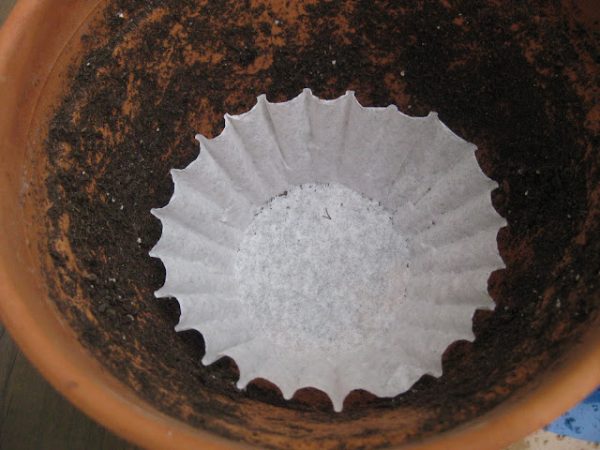
The filters will stop the water from rushing out of the holes and you can bet the soil won’t be coming out either!
Don’t have coffee filters handy? The Brew Rite Coffee Filter works perfectly.
DIY Tool Sharpener and Holder
Probably the most overlooked thing by gardeners everywhere (except commercial propagators who have to follow strict hygiene) is keeping your tools clean and sanitized. You should also be keeping them sharp too. Blunt cuts are harder for plants to heal over and more susceptible to diseases.
That’s why every gardener should take 5 minutes to make this tool sharpener, holder and sterilizer.
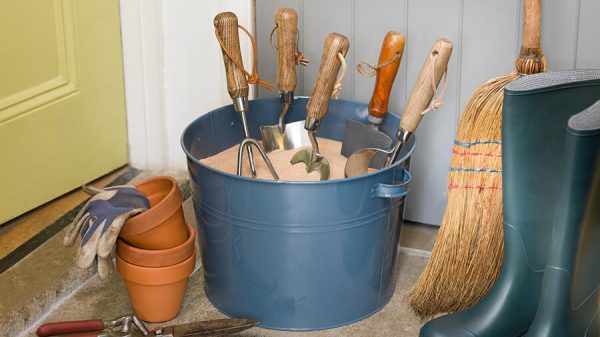
To make it empty a bag of cleaned sharp sand into a bucket and moisten with Linseed Oil. Some blogs say that any oil is ok but some oils (like motor oil) can make your plants sick because they don’t easily break down in the soil, so stick to plant based oils like Linseed.
Epsom Salt Increases Growth
Yes, adding (some) salt to your garden can actually be a good thing. Epsom salts contains a wide variety of minerals and boosts your plants ability to absorb other nutrients that are already in the soil.
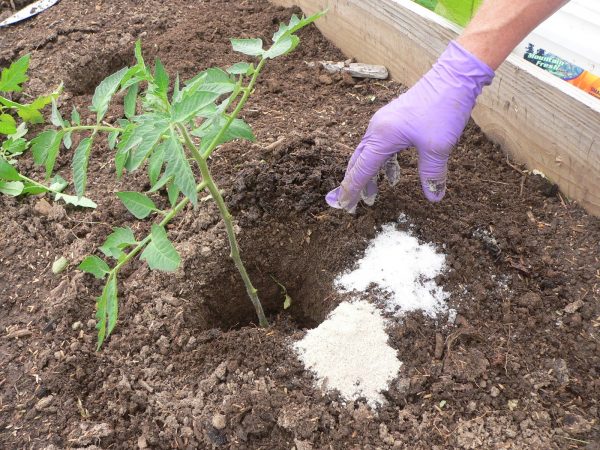
But don’t over do it! Too much Epsom Salts can kill your plants so make sure you follow the correct dosage. I’ve found that the EpSoak Epsom Salt brand works the best, it’s high grade and disolves quickly in the soil.
Grow a Vegetable Garden From Kitchen Scraps
There are many vegetables that can be grown from the scraps you usually throw away. Instead of buying seeds for these crops you can just plant the scraps and watch them grow. The plants will get a head start from the nutrients left in the scraps, and you can replant the scraps over and over again.
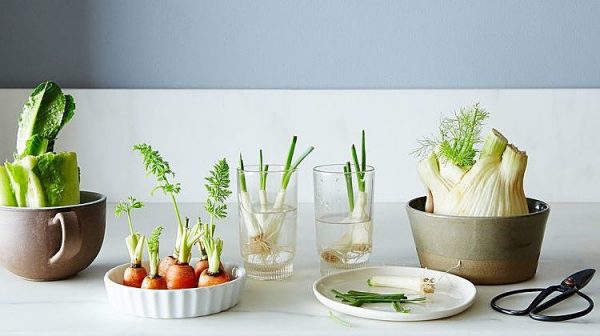
Keyring Your Plant Tags
If you’re someone who likes to keep the tags from your seedling punnets then this idea is for you. Just punch a hole in your plant tag and then thread it onto a large keyring and you’ll never lose a plant tag again. This clever organization tip not only helps you keep track of your plants but also adds a touch of creativity to your garden.
Pro tip: Connect a carabiner to the keyring so you can quickly hook it to your pants, basket or garden bag.
Melon Hammock
Nothing sucks more than watching a melon grow and grow, only to see it snap off before it’s ripe because it’s too heavy. Save yourself the heartache and sling it up so most of the weight is supported.
You can use an old pair of pantyhose or teeshirts to make your slings but I find these Melon Hammocks to be really handy. You can reuse them year after year and they easily stretch as the melons grow.
If you love growing fruits then I highly recommend reading 8 Best Berries to Grow In Containers For Incredible Flavor.
Bean House
What more could you want than your very own bean house? This super simple vegetable garden idea takes about 5 minutes to build. All you need is 3 sheets of wire mesh and a couple of heavy-duty cable ties to tie them together.
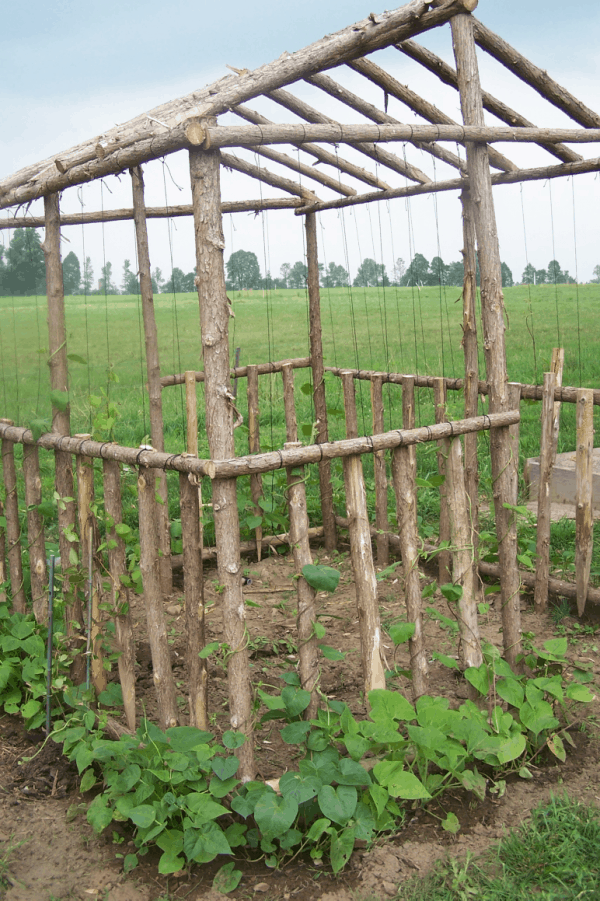
When not in use or if you need to transport it to another bed, you can just fold it up and unfold it in the new garden bed.
Make sure you use UV Stabilized Industrial Strength Cable Ties because the plastic used in normal cable ties breaks down quickly when exposed to the sun.
- Everything You Wanted to Know About Red Tamarillos - June 2, 2025
- A Guide to Tulips: Everything You Need to Know & More… - June 2, 2025
- Guanabana: Description, Flavor, Benefits, And Uses - May 27, 2025

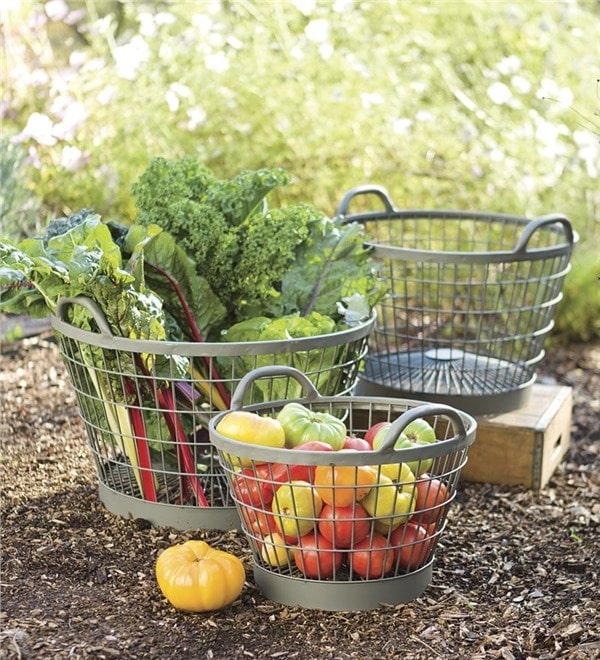
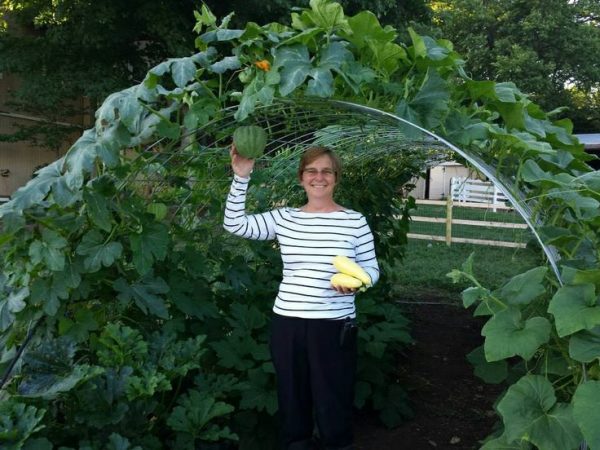
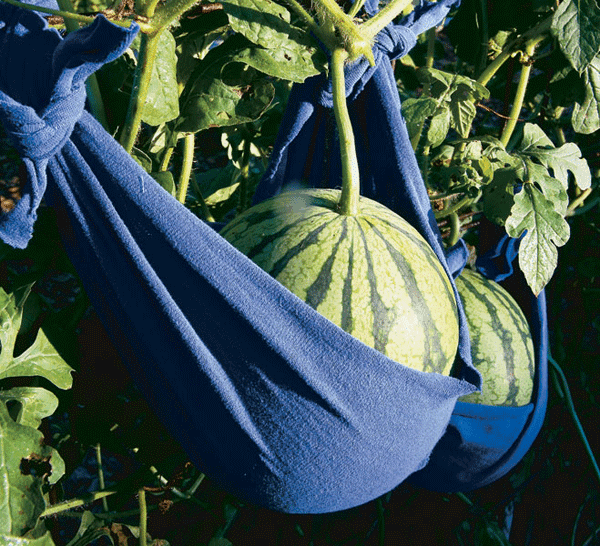
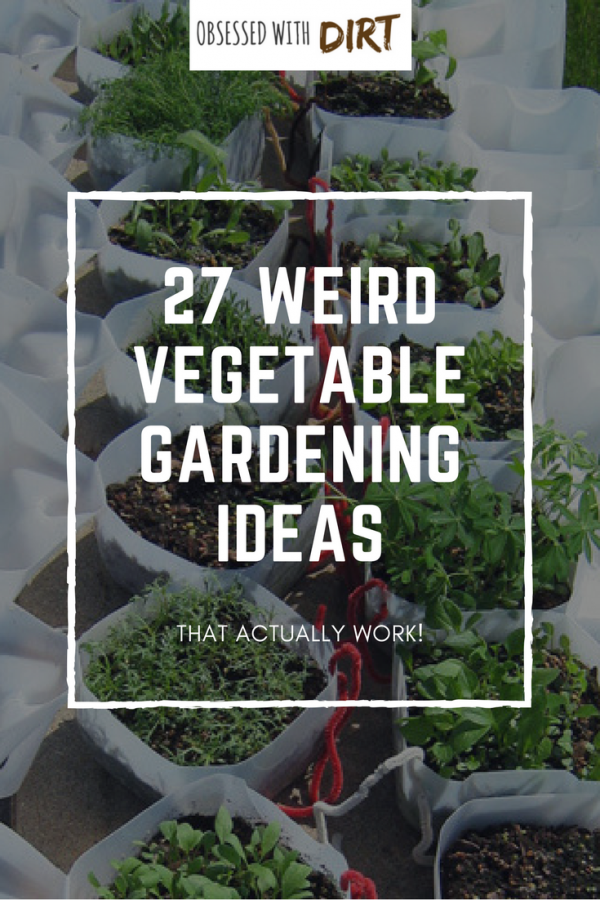 small spaces and more vegetable garden ideas! Check it out #vegetablegarden #thehappygardeninglife #urbanorganicgardener #organicgardening” width=”600″ height=”900″ />
small spaces and more vegetable garden ideas! Check it out #vegetablegarden #thehappygardeninglife #urbanorganicgardener #organicgardening” width=”600″ height=”900″ />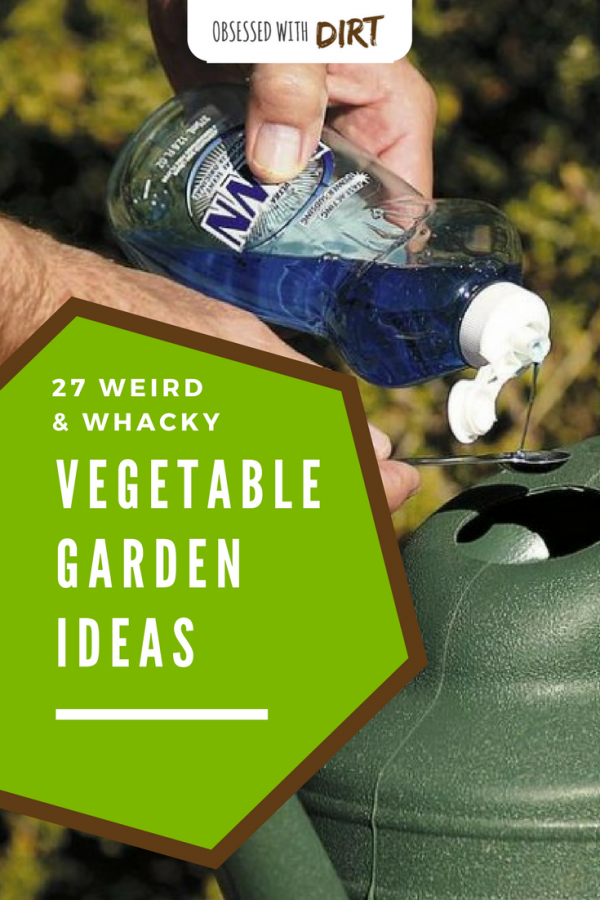 small spaces and more vegetable garden ideas! Check it out #vegetablegarden #thehappygardeninglife #urbanorganicgardener #organicgardening” width=”600″ height=”900″ />
small spaces and more vegetable garden ideas! Check it out #vegetablegarden #thehappygardeninglife #urbanorganicgardener #organicgardening” width=”600″ height=”900″ />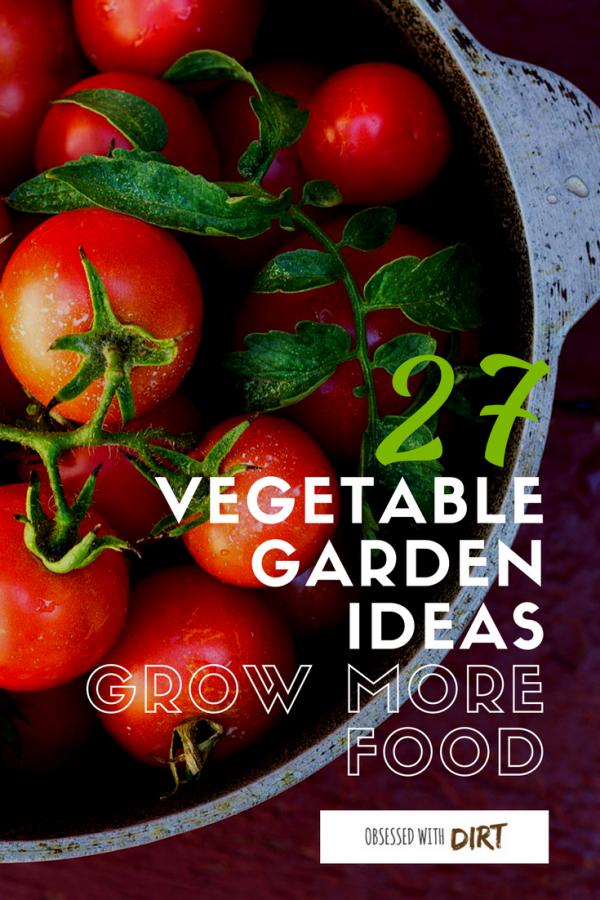
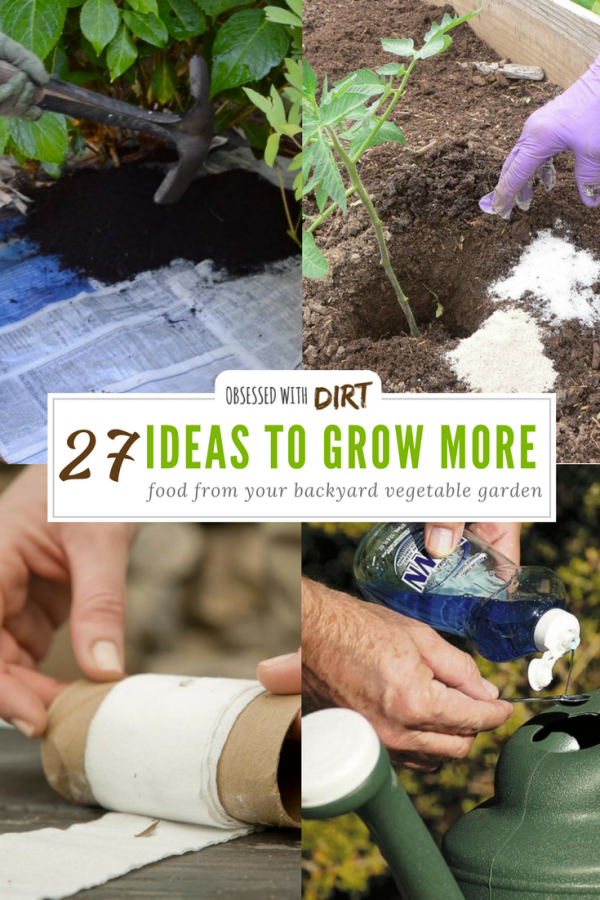
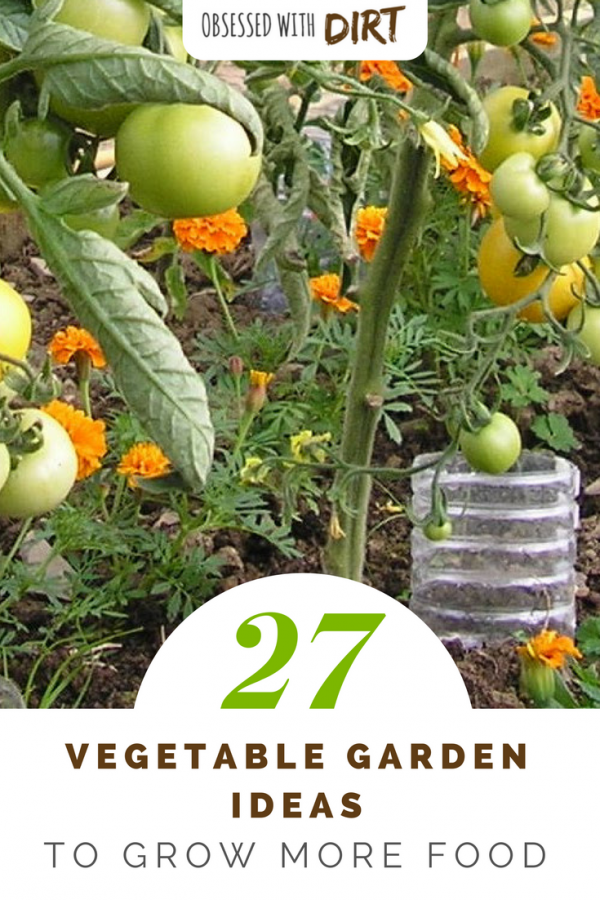
9 thoughts on “27 Vegetable Garden Ideas To Grow More Food”
Comments are closed.